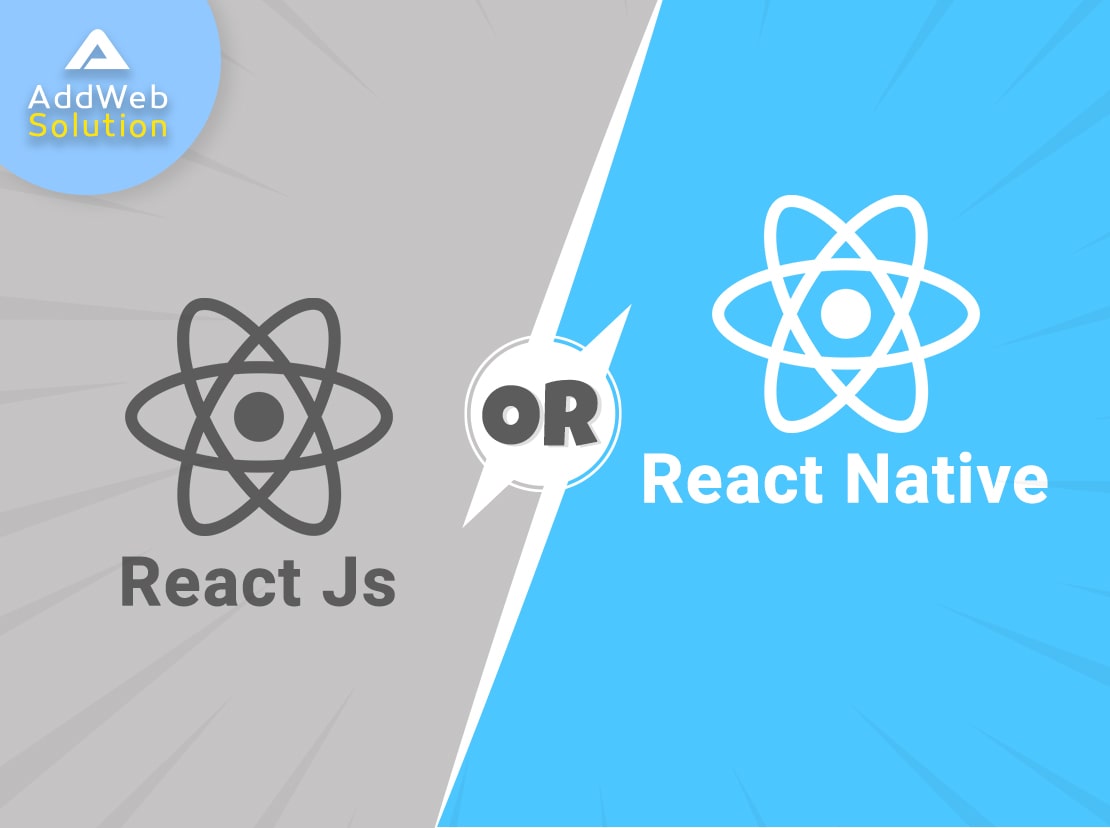ReactJS and React Native, both gained immense popularity in recent years. Though fundamentally different from each other, these siblings from Facebook often compared against each other. Facebook developed ReactJS initially to allow the developers to develop highly responsive and flexible user interfaces for the applications without hindering the performance. Soon after its launch, ReactJS development was recognized very well, and it was open source by Facebook.
On the other hand, React Native was a framework developed to help mobile app developers develop cross-platform mobile applications. Later, the framework was customized by the community and leveraged it to develop even desktop applications.
Though both are having similarities in terms of origin and the way used, there are some key differences everyone should be aware of when it comes to ReactJS development services.
In this blog post, we will try to debunk the key pointers that differentiate ReactJS and React Native from one another.
Technical Differences

Also Read: ReactJS – What Makes it an ideal choice for web application development?
Setup & bundling process…
The fundamental difference between ReactJS and React Native is that one is a JavaScript library, whereas the other one is a framework. Whenever the developer starts with ReactJS development, they must choose a bundle like WebPack and decide upon the modules required to carry out the development.
On the other hand, React Native brings everything bundled together, and you don’t have to worry about anything else to start the project. It is effortless and super fast to set up the project environment. You can start writing code for mobile apps using a variety of built-in features. However, you will require XCode and Android Studio in your system to run the developed applications.
Document Object Model and Styling
When it comes to design, React Native never uses HTML to render the apps developed; instead, it utilizes React Native components to map with Android or iOS user interface components. Mostly, all the components are transformed into a format that is like HTML. Since the code is not rendered in HTML, you might not get a chance to reuse the libraries used with ReactJS development.
For the styling part, the developers must write stylesheets in JavaScript only! This often confuses developers when it comes to overriding the style of a component you are willing to reuse. This indicates that React Native is different when it comes to styling. On the other hand, when you opt for ReactJS development services, it can help you tweak everything when it comes to UI because of excellent libraries.
How about development tools?
In terms of development tools, ReactJS and React Native both are identical. While ReactJS development can bring hot reloads, live reloads and other dev tools, React Native also utilizes various developer tools available in ReactJS, such as Chrome Dev Tools, Redux DevTools, and so on.
However, some tools might not work as expected with React Native since it is not having enough support when it comes to DOM and styling as we can do with normal web apps.
Also Read: Sharing a Little Something That We Know About ‘React Native’
What about Animations?
When it comes to animations, React Native is far away from using conventional CSS to create animations. It requires developers to dig deep into JavaScript fundamentals and design animation for different components of React Native. However, the animation would be fun for the developers since React Native allows them to use Animated API and Velocity.JS. On the other hand, in ReactJS, creating animations is simple and easy for developers. All they require is CSS, that’s it!
Security
React Native is more vulnerable as compared to ReactJS when compared for security. ReactJS provides excellent security features, whereas React Native lacks in terms of providing security while developing any app.
Conclusion
Apart from these fundamental differences, the developers often feel confused about navigation when switched from ReactJS to React Native. It becomes a big headache for the developers to transition from one page to another and thus require the additional library to smoothen the navigation process. On the other hand, the transition from one page to another is quite easy and simple.
While ReactJS acts as a library helping developers tweak, play, and develop UI elements or websites with ease, React Native brings a complete package required to build cross-platform mobile apps. ReactJS heavily rely on CSS or HTML for animation and design, React Native you must familiarize yourself with additional JavaScript libraries.
In a nutshell, ReactJS is ideal for developing high-performance web apps and responsive UI, React Native is meant for native mobile app development. What’s your take on this? Do you want to hire ReactJS developers? Or you want a ReactJS development company to work on your business requirements? Get in touch with our experts now…
Frequently Asked Questions
ReactJS is a JavaScript library developed by Facebook for building user interfaces on the web. React Native, on the other hand, is a framework for building mobile applications using React. While both use the same underlying principles, they serve different platforms – web for ReactJS and mobile (iOS and Android) for React Native.
While both ReactJS and React Native share the same core concepts, the code itself is not directly interchangeable. Components can be reused to some extent, but specific platform-related code and components need adaptation or rewriting when transitioning between ReactJS and React Native.
ReactJS uses HTML elements to create UI components for web applications, whereas React Native uses native components specific to each mobile platform (iOS or Android). This difference allows React Native to achieve a more native look and feel on mobile devices.
Yes, there is a difference in styling. ReactJS typically uses CSS for styling web components, while React Native uses a JavaScript-based styling system. React Native’s styling aligns with the native styling systems of iOS and Android, providing a consistent appearance on mobile platforms.
ReactJS relies on browser-based navigation with URLs and the browser’s history API. In contrast, React Native uses a navigator component with mobile navigation patterns, such as stack navigation for iOS and Android, providing a seamless mobile navigation experience.
React Native is optimized for mobile performance, leveraging native components and capabilities, which can result in better performance on mobile devices. ReactJS is optimized for web environments but may not have the same optimization level for mobile platforms.
Yes, to some extent. Developers familiar with ReactJS can understand the core concepts of React Native, facilitating a shared codebase for certain functionalities. However, expertise in platform-specific considerations is essential for optimizing performance and user experience on both web and mobile.
Updates and maintenance for ReactJS projects involve web-specific considerations, while React Native projects require attention to mobile-specific updates. React Native projects may need additional testing for each platform when updating, making it important to consider the unique aspects of each environment.
